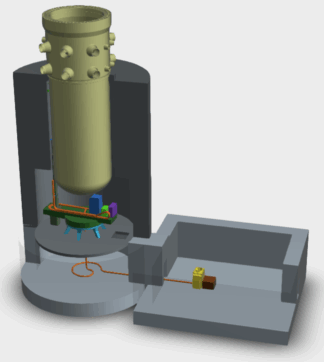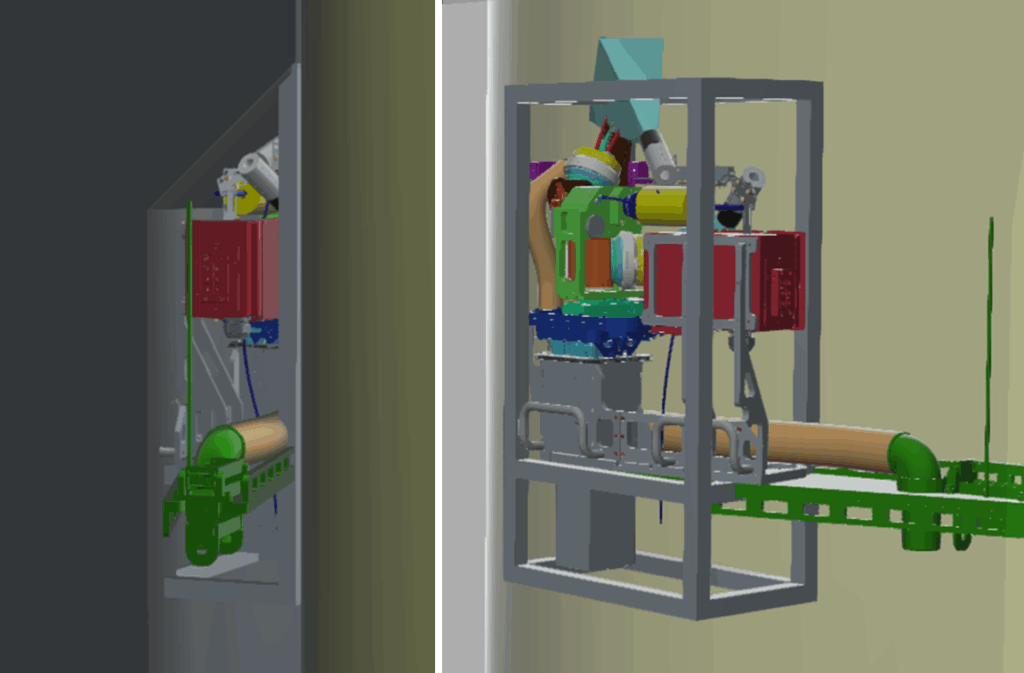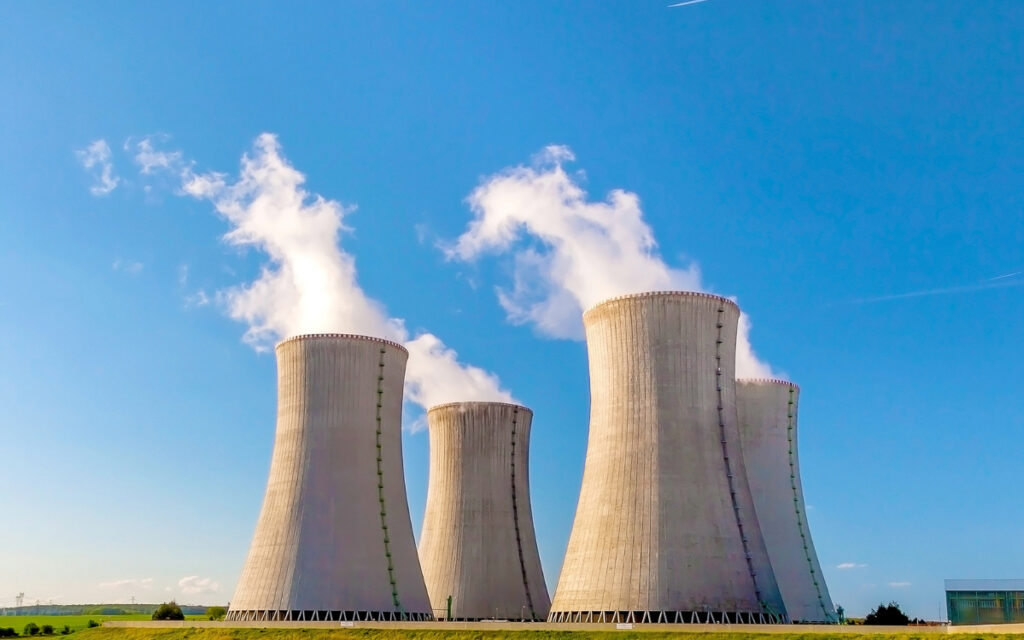Laser cleaning is a modern and exceptionally gentle method for removing contaminants and corrosion residues from sensitive reactor components. Its application in the nuclear industry enables effective cleaning of the pressure vessels and other critical parts without mechanical intervention or the use of chemical agents.
Laser Cleaning in the Nuclear Industry
The process is contactless, selective, and highly precise – ensuring maximum protection of the base material, minimizing the generation of secondary waste, and enhances overall operational safety. As a result, laser cleaning is an ideal solution for applications requiring the highest standards of cleanliness, repeatability, and radiation safety.
Laser Cleaning of Reactor Equipment
Components of nuclear power plants are continuously exposed to extreme operating conditions – high temperatures, pressure and the effect of cooling water with boric acid additives. These factors lead to the formation of corrosion and deposits that can reduce operational reliability or even make inspection methods, especially ultrasonic testing, impossible.
Our experience with cleaning the pressure vessel of a VVER-440 reactor confirmed that laser technology can effectively remove these deposits even in environments with very limited accessibility and strict radiation safety requirements. In practice, this means removing precipitated boric acid and other impurities down to the base steel – a necessary step to ensure reliable ultrasonic inspection.
Applications and Technological Challenges
Laser cleaning is used in many areas of the nuclear industry. It is applied to reactor pressure vessels, where it is necessary to remove layers that prevent ultrasonic inspections. It also finds application in cleaning steam generator collector flanges with very narrow openings, in bolted joints and accessories where thread and surface cleanliness must be ensured, or in the preparation of steam generator tubes for subsequent laser welding.
These applications are associated with significant technological challenges. The gap between the containment wall and the reactor vessel often does not exceed 30 centimeters, which places high demands on the compactness and accuracy of the cleaning heads. The process also generates dust particles, the nature of which may not be known in advance, and the equipment must operate at distances of tens of meters from the laser source. Installation itself takes place in confined spaces, often at height, and requires strict occupational safety monitoring.
Laser technology overcomes these obstacles thanks to its contactless principle, precise targeting, and the possibility of integration with camera and sensor systems, which ensure remote operation and continuous process monitoring.
Benefits for Operation and Inspection
Practical deployment of laser cleaning demonstrates that it is a reliable method for removing deposits and corrosion layers down to the base metal. This creates the necessary conditions for non-destructive testing, especially ultrasonic inspections. The technology can be applied even in narrow and difficult-to-access spaces, requires only minimal operator intervention and increases worker safety. Compared to mechanical or chemical cleaning, it also produces significantly less secondary waste, which is a crucial advantage in the nuclear industry.
Further applications of laser technology in the nuclear industry
- Under water laser cleanning inside the reactor vessel
- Laser cleanning/decontamination of the spent fuel boxes
- Cleanning and inspection of the steam generator collector flange
- Welding of the plugs of steam generator tubes
- Laser cleaning of the bolts



